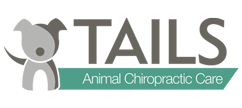Last Updated on September 7, 2023 by Dr. Alisha Barnes

If you own a dachshund, you are probably aware that they are prone to back pain and injury! According to the UC Davis veterinary genetics lab, 20-25% of all dachshunds will experience disc disease during their lifetime- usually a condition called IVDD, or Intervertebral Disc Disease.
This is a debilitating condition that can lead to pain, paralysis, and many other secondary problems. IVDD is described as premature calcification, or hardening, of the nucleus pulposus.
The nucleus pulposus is the inner core of the vertebral disc, and it is composed of water and a network of collagen fibers. The elastic structure works as a cushion to allow flexibility of the spine, protecting the vertebral column against forces of compression and torsion without damaging the disc!
Premature calcification of the nucleus pulposus causes the disc to be less able to adjust to compressions and twists. The nucleus pulposus can then herniate, or protrude, through the protective outer disc layer called the annulus fibrosus.
It then leaks out of the disc space and inflames the nerve roots nearby, causing severe pain and sometimes neurological dysfunction. We call this nerve dysfunction myelopathy.
IVDD is a degenerative disease, meaning as the dog ages, the degeneration continues, and premature calcification can start in dogs that are less than a year old. The biggest worry with an IVDD diagnosis is hind end paralysis over time.
According to the Animal Genetics Scientific Journal, certain breeds are more susceptible to IVDD because of their body type and genetic makeup. A group called chondrodystrophoid breeds, or dwarfed breeds, includes dachshunds, basset hounds, beagles, corgi’s, and bulldogs.
These breeds have short-legged, long-bodied builds that predispose them to disc injuries, as well as hardening of the nucleus pulposus inside the disc at a young age.
There are two main types of treatment for IVDD: surgical or conservative care.
If your pup is experiencing late stage degeneration, surgery may be the only option. While it is not always effective in relieving pain or regaining their mobility, it can stabilize the spine and give your dog the best chance at recovery is that nucleus pulposus has already herniated and compressed the nerves.
If this herniation is left alone without treatment, it can lead to weakness, loss of bowel or bladder function, hind leg dragging, and even paralysis. Contact your local veterinarian if you notice any of these symptoms in your pet.
With conservative care, the focus is on prevention of further degeneration, even if the dog is already experiencing bulging or painful episodes of back pain. In early stage IVDD, you may notice a few days when your pup is suddenly weak, yelping when touched or picked up, and unable to walk.
This pain and weakness can be caused by a disc interfering with normal nerve communication, and may resolve itself naturally after rest. For these cases, chiropractic care can be extremely helpful!
According to Dr. Alinovi, a retired veterinarian, animal chiropractic restores balance in the body by restoring motion in the joints. In the case of IVDD, there is pain where the disc is ruptured (herniated); the body attempts to protect itself from further damage by restricting motion at the level of the injured disc with.
Lack of movement leads to muscle spasms; those muscle spasms make mobility more difficult and the disc pain gets worse. It becomes a vicious cycle! Chiropractic can help reduce pain and swelling by gently addressing any restriction in the spinal segments above and below, as well as stretch those surrounding muscles to allow the spine to relax and heal.
It may take several visits before the dog is back to their normal behavior, but chiropractic care has been proven to relieve pain and restore quality of life as well as surgical options or crate rest.
Numerous studies funded by the National Institutes of Health have also shown acupuncture and chiropractic to be superior to surgery for treating pain and improving function. The sooner you are able to seek out all the options for your dog with disc disease, the better their chances will be.
As long as your dog can still feel pain, this is one place where jumping into alternative care can be in your dog’s best interest.
At Tails Animal Chiropractic Care, we see the most benefit for disc cases with weekly chiropractic adjustments for 6-8 weeks. During these appointments, we will monitor the range of motion before each adjustment, and assess the need to add laser treatments as well.
Disc pain can subside, then reoccur suddenly, so keeping your dog adjusted quarterly can prevent new episodes from popping up as often. Call us today to discuss if chiropractic is the right choice for your furry friend, and how we can improve their quality of life!
